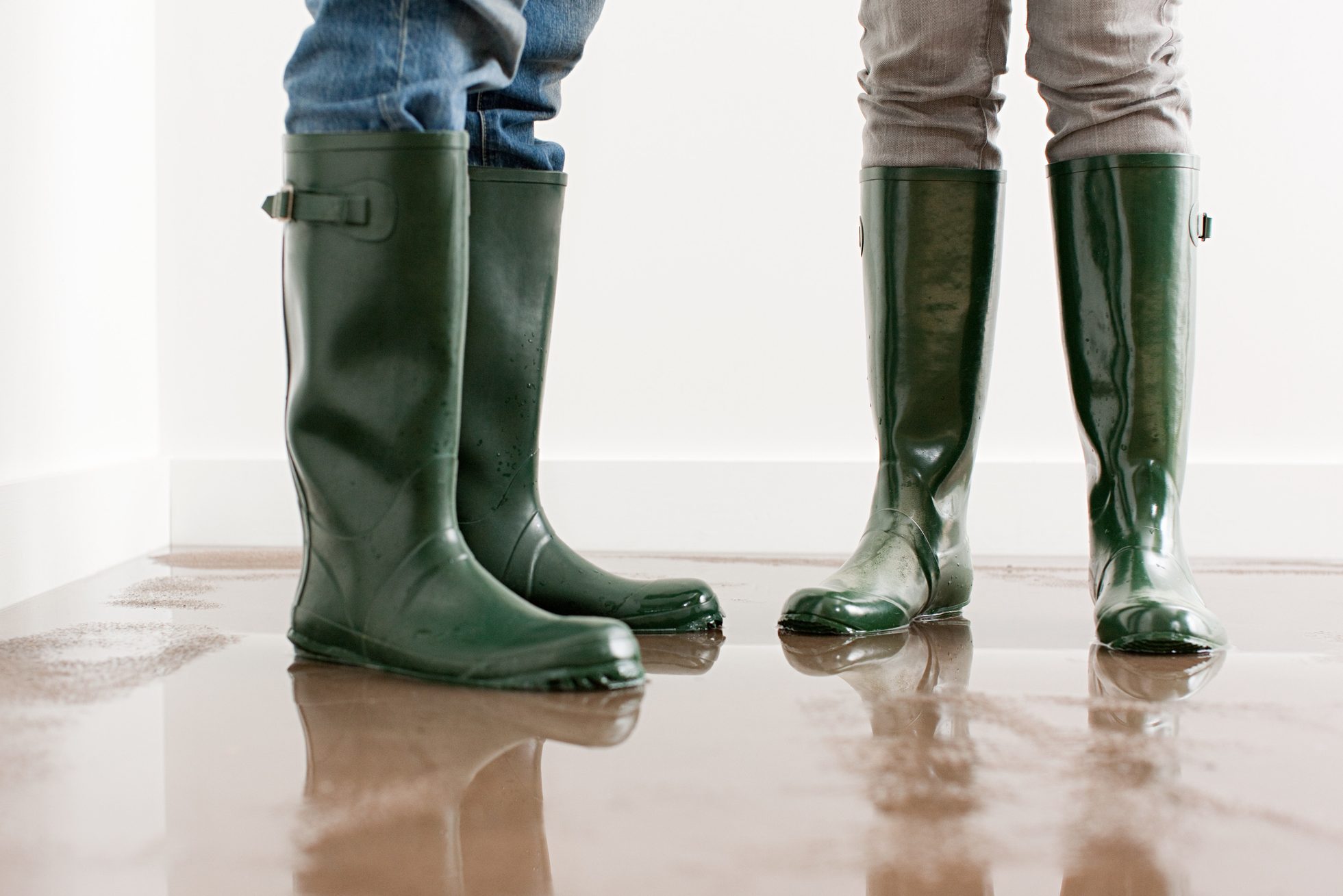Even minor floods can create major problems if they aren't cleaned up quickly.
Introduction
Get water out fast with just a few tools.
There’s no getting around it: Major flooding requires professional clean-up with with professional equipment. But if you’ve got just a small amount of standing water in your basement, it’s better to tackle the project yourself rather than wait for a pro to arrive.
“Homeowners can and should clean up a small amount of standing water in a flooded room, if it’s from a clean water source, such as a leaky pipe, rainwater or a sump pump overflow,” says Darren Hudema, Director of Training and Technical Services at PuroClean. “Acting quickly can help prevent further damage and mold growth.”
However, the source of the water is crucial in determining whether it’s safe to handle. If the water is from a sewer backup or floodwaters, it’s probably best to call a pro from the onset, since those can contain harmful bacteria, viruses and other contaminants.
Especially with sewer water, be extremely careful if you DIY the cleanup, says Travis Perry, marketing and sales director at NuFlow Indy. “Try to minimize skin contact, wash your hands frequently and contact your city government right away for guidance,” he says.
Here’s how to safely remove water from a flooded room before it does even more damage.
Tools Required
- Dehumidifier
- Wet/Dry Shop Vacuum
Project step-by-step (4)
Make Sure It’s Safe
Don’t plunge headfirst into a watery area without taking stock of the situation first.
- Standing water and electricity can make one nasty safety hazard. Wear rubber-soled boots and gloves to minimize the risk of electrical shock.
- Don’t touch any electrical devices (especially those still plugged into an outlet) until the basement has been sufficiently dried out.

Find the Source of the Water
The first thing you should do when you go down to the basement is find the source of the flood water. There’s no sense in learning how to remove water from a flooded room if you can’t stop the water from coming in.
“To find the source, check the usual suspects first, like clogged gutters, faulty appliances or pipe leaks,” says Omarr Picken, founder at OP Plumbing.
Other reasons can include:
- Sump pump problems;
- Clogged gutters;
- Gutter downspouts that don’t extend far enough from the house;
- Heavy rainfall or snow melt;
- Foundation cracks;
- Faulty appliances;
- Sewer backkups;
- Improper grading around your house.
“If the water’s coming up through cracks in your basement floor or showing up in multiple spots, you’re likely dealing with hydrostatic pressure from groundwater, which is a more serious issue,” says Perry.
If the flood was caused by natural, weather-related causes, you probably don’t have to worry about more water coming in (at least not until another rain storm hits) and you can start the clean-up process.
If something like a leaking pipe or a sump pump failure caused the flood, fix (or at least patch) that problem before attempting to get the water out of the room.

Pump the Water Out
The best tools for getting water out of a basement are a wet/dry shop vacuum and a dehumidifier.
- Set up the shop-vac so that it can suction up water.
- Take the top off and remove the air filter.
- Place a wide, flat attachment on the end of the shop-vac hose.
- Suck up all standing water into the vacuum. Then, deposit it outside of your house as far away from the foundation as possible.
- Pro tip: If you’re working with water-logged carpet, pass over each section of the floor multiple times to ensure you’re drying it out as much as possible.
- Once all the standing water has been removed, set up the dehumidifier in the room and turn it on.

Assess the Damage
After the water is gone, it’s time to take a look at what further repairs will need to be done to return the room to normal.
- Flood water is likely dirty. So, anything that it touched should be thoroughly cleaned (if it can be) or thrown out.
- Any wood or drywall in the room should be inspected. If it’s waterlogged, it will likely need to be removed and replaced.
- If you know for certain that the floodwater came from a contaminated source (i.e. a sump pump) you should remove and replace the carpet.
- Structural damage is another key concern, so check for swelling, warping or soft spots in floors, walls and ceilings, says Hudema.
It’s also important to act quickly, since mold can grow within a day or two, often in places that are hard to spot or reach. This is where calling in the pros can make a big difference, as they have tools like moisture meters, thermal imaging cameras and hygrometers, says Hudema. “Assessing the damage is essential to prevent long-term issues like mold growth, structural weakening and indoor air quality problems,” he says.
Also, when all the water is gone, keep an eye out for things like warped wood, stained drywall or moldy spots, which can grow faster than you’d think on wet carpets,” says Picken. “Be particularly cautious with electricity, as water can affect wiring and outlets.”

About the Experts
- Travis Perry is marketing and sales director at NuFlow Indy, a company specializing in trenchless sewer repair solutions in Indianapolis, Indiana.
- Omarr Picken is founder at OP Plumbing in Sydney, Australia, and has been a plumber for 32 years.
- Darren Hudema is Director of Training and Technical Services at PuroClean and serves on the board of directors for the Institute of Inspection Cleaning, Restoration, and Certification (IICRC).



















